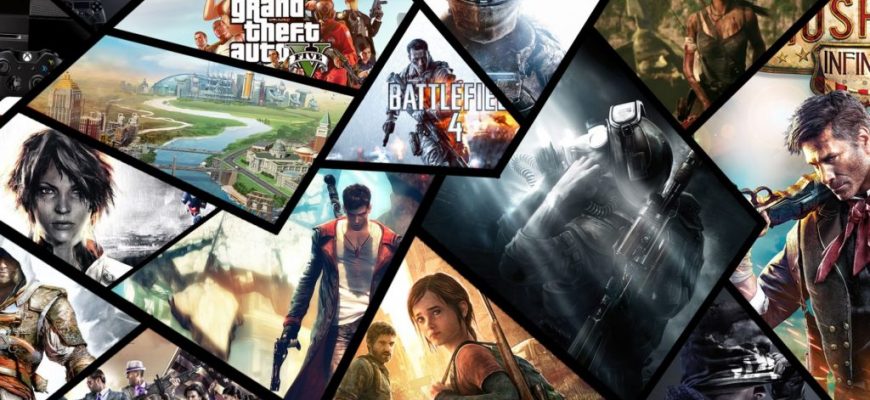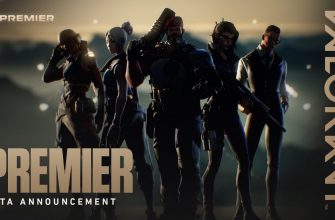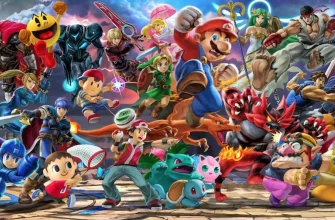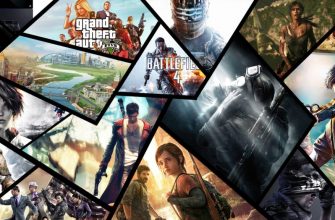Fighting games weren’t made to be single player.
They were born as arcade cabinets that made more sense and more money by attracting at least two people. Fighting games did have single player modes even in the days of the arcade but it was never the focus. The focus was beating the crap out of your friends.
Once we entered into the era of the home console (and then the PC) fighting games had no reason to ignore single player. They didn’t need to get quarters out of kids’ pockets anymore and as consoles grew more powerful, developers could put more into each game. However, the fighting game genre was still, at its core, a multiplayer experience. It was still made for beating up your friends.
Unlike RPGs or shooters, fighting games didn’t start with a strong single player formula. The base gameplay of a fighting game is the 1v1, a simple battle between two competitors. In single player, the issue is that one side has to be a computer and the computer doesn’t really know how to play well. Level 9 CPUs in Smash and Very Hard AI in other games will toast new players but eventually new players can learn how to cheese AI behaviors. AI themselves won’t learn new combos and kill confirms loaded into the game like a human would either.
The AI issue exists in every game to varying extents. Lots of RPG bosses can be glitched out, tricked into falling off ledges, or manipulated in several ways. Strategy game AIs are often way too easy to dupe and the game compensates by giving the AI more resources and making the AI unreasonably hostile to the player.
For fighting games, the AI presents a problem because of the 1v1. AI do have the intelligence and reactions to beat humans at fighting games. If you’ve never seen a TASbot play Melee, it’s worth a watch. However, AI doesn’t have the intelligence to be human and that’s the trouble.
If you fight a computer mono on mono, you may lose for a while but your human brain has more room to deal with more scenarios than the computer’s code. Eventually, you’ll start to see how the computer reacts and what strategies work against it. Beating the computer becomes less a task of mastering combos, kill confirms, and mind games and more a task of cheesing the machine.
RPGs get around the AI issue by making swarms of AI or a single boss AI that runs on a pattern you have to read and beat several times to destroy. Strategy games get around the AI by populating the map with computers so you can pit them against each other. At the end of the day, these single player games were designed knowing most of the gameplay would be against the game itself, not another player.
To create good single player, fighting games have to think outside of the arcade cabinet they were born in.
The NetherRealm method: story first
One simple way to make single player compelling is to give the player a story to see through. NetherRealm, the developer behind Mortal Kombat, puts the story first.
Mortal Kombat 11 has one of the most comprehensive and intense story modes in any game, let alone fighting games. The story mode is basically a movie interrupted by the occasional fight with the CPU. And it works really well.
Youtube is full of Mortal Kombat 11 videos capturing this or that cut scene – or all of them rolled into a nearly four-hour long movie. One video that compiled all the cut scenes has about 12.5 million views. If you watch the cut scenes you can see why. The character models look better than in a lot of modern RPGs, the dialogue is surprisingly sharp and funny, and the storyline feels engrossing.
The story method does have some unavoidable clunkiness, though. Characters have to fight for the game to be a game and so the plot needs to create a conflict where everyone is punching everyone for some reason. In Mortal Kombat 11, they do that through crossing timelines, introducing a new character, and a whole new race of godlike beings. It’s a little much, it’s a little anime, but Mortal Kombat’s identity is blood, gore, and camp so it works.
Other fighting games have had more linear stories routed through a single character, to mixed success. Soulcalibur V centered its story around a few new characters only to lose the interest of a lot of fans. Part of the fun of a fighting game comes from mastering a handful of characters you really enjoy. Pushing a chunk of your playerbase into playing a character they don’t like or gel with is a great way to make them dislike the story mode almost regardless of its writing.
The NetherRealm approach of creating a bizarre, campy, anime storyline lets players use and see a wide array of characters. NetherRealm also seems to understand how strangely attached fighting game players become to their characters. Search Mortal Kombat 11 on youtube and you’ll find even more videos that show hours worth of unique character interactions that happen before the matches.
The story spills out of the confines of the campaign and into the game in a way fans clearly appreciate. While the lines are simple, they no doubt took a lot of extra work from writers, animators, and voice actors. The work paid off for NetherRealm as Mortal Kombat 11 outsold Kingdom Hearts III, made over 8.8 billion dollars, and was the 5th best selling game of 2019.
The Melee method: mini-games galore
Super Smash Bros. Melee had something of a storyline you could see in Classic or Events Mode, however it had a lot more in terms of raw, fun mini-games. Melee had a single player advantage other fighting games didn’t in form of its items and what they did to character physics. Characters could be huge or tiny, they could be poisoned and stunned, they could have double speed, a new special move, and they could do it all on walky stages that incorporated platform elements.
Melee had all the tools to make awesome mini-games, and Melee did just that. Very few fighting games have as much raw single player fun packed into their menu as Melee does. We forget about a lot of it now, since the game has been out for years and the competitive scene is what shines.
At the time, I remember spending days on all the different modes. There were survival modes in Cruel Melee and 100 Man Melee. There was a combo practice mode in Home Run Contest. There was a spacing and movement practice mode in Break The Targets. Even the end credits of classic mode was a mini-game. Melee gamified literally everything and gave weird, unpredictable rewards at the end of each game. I can still keenly remember the “you just unlocked something!” fanfare from Melee because it played so often.
The minigame method has a lot of surprising upsides, particularly in how it addresses AI. Minigames don’t rely nearly as much on the AI being sharp and human and sometimes don’t rely on the AI at all, like in Break The Targets. All-Star mode made the AI more challenging by pitting so many against you and Adventure Mode made the AI more akin to what you’d see in an RPG.
Melee’s minigame focus also paved the way for future games by creating beloved content that fans would ask for again. When Nintendo picked the story first method in Brawl’s Subspace Emissary, they were building off of Melee’s Adventure Mode. The return of Home Run Contest in Ultimate came from fan demand and of course Event Matches were the predecessor for Ultimate’s World of Light and Spirit Board.
The Soul method: you got RPG in my fighting games!
The Soul series – Soul Edge, Soul Calibur, etc – has a lot of interesting takes on the fighting game genre. Every Soul Calibur game seems to come with a weird surprise, whether it’s an insanely in-depth character creator or a Tekken character. One of their original surprises was the RPG element.
As you went through Soul Calibur’s single player modes you’d unlock new weapons and items that would change your character. Now, the reward isn’t just beating the AI or moving the story forward. The reward is new stuff.
Soul Calibur makes the new stuff pretty important, too, as it can change your character’s stats and appearance. Soul Calibur also gives in-game currency that you can earn through different modes and spend to get yet more stuff. It’s all torn from the RPG playbook and it gives the single player modes more depth and buy-in than they would have had normally.
We can also see Smash Ultimate do this through a mix of the spirits and World of Light. World of Light functions a lot like a weird JRPG, where the goal is to find the right items and spirits that unlock new parts of the map and make old battles easier. Ultimate doesn’t incorporate these RPG elements quite as gracefully as Soul Calibur does though. Soul Calibur builds core mechanics around items and RPG rewards, where Ultimate uses them as more like a stocking stuffer.
The Street Fighter IV method: focus on versus instead
Story, RPG elements, mini-games, these aren’t what made fighting games what they are. Versus mode makes fighting games what they are. To get close to that spirit, some games make single player a secondary concern and go straight to versus mode.
Capcom has done this with Street Fighter IV and the early build of Street Fighter V. They went to such an extreme with Street Fighter V that the game got a good deal of bad press early on and did not sell well. Capcom gradually added in more content to repair the damage.
Street Fighter IV received massive critical success despite only having an arcade and challenge mode that didn’t offer much knew or really much at all. However, Street Fighter IV nailed the multiplayer modes of the game so well that it just didn’t matter. Players were happy to look past the single player failings and the game sold 3.4 million units in addition to whatever it made at the arcade.
Focusing on versus is more viable than ever due to the internet. Online matchmaking lets human players face off with much more ease than ever before. If the matchmaking system works well, the level of competition feels more even too. Rather than going to a tournament and getting destroyed as a new player, you can grind out matches against other new players.
A good versus mode, a good matchmaking system, and a good netcode can be enough for a modern fighting game to survive. To me, Street Fighter V’s initial flop shows that you need to offer something to the single player gods. A half-assed offering can work if it’s clear that you put a lot of ass into the fighting behind the fighting game.
Difficult as it was to make strong single player for fighting games, a lot of companies have managed it. The genre receives tons of flack for its single player, which is fair in part. Many fighting games clearly have little interest in entertaining a lone person and many of these fighting games should have better internet given how much they’re putting on the versus mode. However, developers have managed to find a place for single player in a genre that wasn’t designed for it and they’ve done it with several different strategies.






